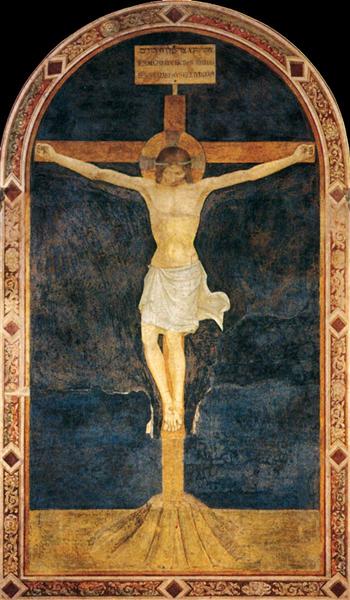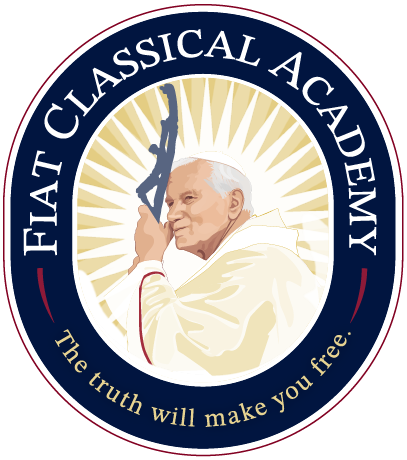Who we are
“Open wide the doors to Christ”
– St. John Paul II
When we look at the factors leading to the launch of Fiat Classical Academy, we thank God for His timing and inspiration.
Some members of our team have been excited about classical education for years. There has been a lingering question – “Could God be calling us to start a classical high school someday?” – in their minds that took on new life when a fellow parishioner casually mentioned how wonderful such a school would be in southeastern Indiana.
The doors began to fly wide open, leading us to this moment anticipating the launch of the only private high school in Dearborn County.
Our Name
In Latin, fiat means, “Let it be done,” or more simply, “Yes.” At creation, we hear God’s words, “Fiat lux,” or, “Let there be light.” Our very life is a response to His initiative in creating us. Mary’s fiat to becoming the Mother of God established the place for God to become man in order to redeem us. Jesus Christ’s fiat to the Father on the cross brought salvation and opened an even more profound relationship with God to every human person created in His image and likeness. What incredible things God can do with our own fiat, a “yes” offered in faith and trust that “He who is mighty has done great things for me,” as Mary proclaims in her Magnificat.


Our Patron
St. John Paul II is the patron of Fiat Classical Academy. His work and thought are woven throughout our curriculum and school culture. He also embodied in his person what he expressed in his teaching. We see in St. John Paul II a lover of God, the natural world, the arts, literature, language and philosophy. He reminds us that our “yes” to God doesn’t diminish our true selves but rather leads to our full flourishing.
Our Motto
“The truth will make you free” is found in John 8:32. When asked if he could only save one line from Sacred Scripture, St. John Paul II said without hesitation that he would choose these words. The height of authentic freedom is found, not in the lack of boundaries, but in an embrace of the fullness of truth. As we seek truth together, we become fully alive.
In 1998, St. John Paul II hosted the ad limina visits with the bishops of the United States. When meeting with the bishops of Indiana, Illinois and Wisconsin, he said:
The greatest challenge to Catholic education in the United States today, and the greatest contribution that authentically Catholic education can make to American culture, is to restore to that culture the conviction that human beings can grasp the truth of things, and in grasping that truth can know their duties to God, to themselves and their neighbors. In meeting that challenge, the Catholic educator will hear an echo of Christ’s words: ‘If you continue in my word, you are truly my disciples, and you will know the truth, and the truth will make you free’ (Jn 8:32). The contemporary world urgently needs the service of educational institutions which uphold and teach that truth is ‘that fundamental value without which freedom, justice and human dignity are extinguished.’
These words have been influential for the founding of Fiat Classical Academy.

Our Colors
Why navy blue, red and gold? We strive to be intentional in all that we do at Fiat Classical Academy and the choice of our school colors is no different.
As it reminds us of the seemingly infinite sky, blue evokes the heavens and divinity. It is thus often used for Christ’s outer garments in iconography. A darker blue is used for the Virgin Mary, the Mother of God, in whom the heavenly and earthly became united.


Being the color of fire and blood, red is often used in iconography to indicate life on earth especially through its connections with vitality and sacrifice. It is a color frequently used in images of Christ and can point to his self-gift as a sacrifice for us. It is a reminder of his human nature as he took on flesh and blood. Red is also a color used in medieval and Renaissance depictions of Mary as it symbolized an elevation of dignity or state. Finally, red is one half of the Polish flag, the homeplace of our patron St. John Paul II.
The color gold indicates the glory and splendor of God. Its brilliance reminds us of the splendor of God’s uncreated light, for in Him there is no darkness. We see a reference to the “fiat lux” – “Let there be light!” uttered by God at the dawn of creation. In iconography, the divinity of Christ’s divine nature, which shines through at moments during his life such as the Transfiguration, is depicted using gold. The color is also a nod to the Vatican flag.

All three colors – dark blue, red and gold – have in various ways been associated with royalty or elevated dignity. The education we offer proposes to young men and women that they are called to the fullness of life offered by Christ.
